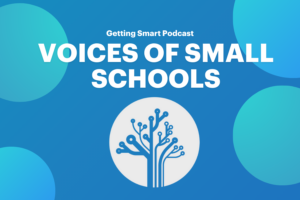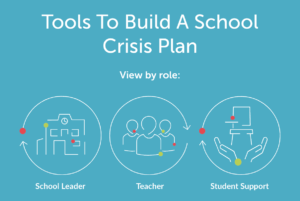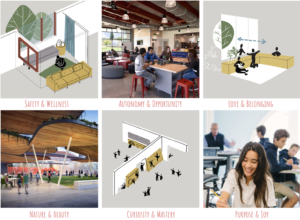Fortified Environments Turnaround Impacts of Poverty

Ask a teacher in a high-poverty school to name their challenges and near the top of the list will be disruptive kids and students not ready to learn.
Recent studies have demonstrated and even quantified a link between poverty’s high incidence of adverse childhood events and subsequent risk of behavior and learning problems. Kids with four or more adverse events (12% of kids in one study) are about 50% more likely to exhibit learning/behavior problems (Burke et al. 2011).
Students that grow up in poverty “bring adverse childhood experiences into schools in the form of traumatic stress,” which “can cause children to be tuned out, preoccupied, impulsive, unable to concentrate, distrustful, and nervous.” That’s not news to urban teachers but it is relatively new to scientific literature as chronicled in a recent lit review by Turnaround for Children, a NYC nonprofit focused on addressing the root problems faced by struggling schools.
One of the important source documents in the Turnaround review is a recent study of early life toxic stress (from Pediatrics) which provides an overview of the science of toxic stress. It is a “cautionary tale about overlooking critical periods in development,” but provides “reason for optimism about the promise of intervention.”
Cantor has “gone deep into the neuroscience, genetics, molecular basis of effect of poverty related trauma on the brain” and believes there is strong evidence of “profound effects at the molecular level of high levels of traumatic stress.” This “fight or flight response to stress impacts brain development, maturation of key learning and emotional centers and impacts the developing immune system of children.”
The outward signs of stress effects vary from “distraction to dysfunction but inevitably interfere with children’s ability to focus, interact with others, and progress in school successfully,” according to Turnaround’s review which concludes, “The profound impact of trauma, specifically the trauma of poverty on a child’s developing brain, has huge implications for the way children learn, the design of classrooms, the preparation of leaders and teachers, and what is measured as part of the school improvement effort as a whole.” Because these challenges are knowable and predictable, it is possible to design interventions to address them.
Predictable responses to trauma represent a risk to student development, to classroom learning, and to school wide culture. Turnaround believes that “until high-poverty schools have practices and supports that specifically address these risks, they will continue to underperform and millions of children will never reach their full academic and personal potential.”
There has never been a time when a focus on these developmental stresses and challenges could be more important. Educators are now faced with bringing children from very diverse backgrounds to the same high standards. The disparities in readiness to do this are evident in the deep drops in scores now being recorded across the country.
Dr. Pamela Cantor, Turnaround CEO, believes it is becoming clear in research and practice that mindsets and self regulation “are both highly malleable and responsive to positive influences, including well designed classrooms, the most powerful of which include meaningful connections with adults.”
In this context, Turnaround views each school’s classroom as more than an instructional environment—it is also an important and ongoing source of reinforcing experiences that have the potential to enhance each child’s development and performance. Children growing amidst poverty must have a very different kind of classroom—a fortified environment that reduces stress, fosters positive connections with adults and peers, and promotes noncognitive attributes, such as academic mindsets, motivation, self-regulation, and social efficacy (Farrington et al., 2012). Such classrooms can truly change the course of children’s cognitive, social, and emotional development, laying the foundation for rigorous, productive, and successful learning.
Turnaround works simultaneously at the student, classroom, and school levels to: 1) build systems of direct support for the highest need students, 2) strengthen skills for managing student behavior, instructional capabilities, and developmental understanding of all teachers, and 3) support school leaders in driving the creation of an optimized culture for learning and growth. This multi-year work (3-5 years) establishes the enabling conditions for successful teaching, productive engagement and learning, and positive youth development. These conditions serve as the foundation for core elements of education reform targeting college and career readiness, the use of personalized and blended learning strategies, and, perhaps most of all, the successful implementation of the new Common Core State Standards (CCSS)—content that will demand much more motivation, risk-taking, and persistence in students’ approach to learning.
What is needed are school-wide practices and structures delivered at sufficient intensity so students experience the school as set of consistent interactions designed to engage, support, and challenge them while building discrete learner attributes which mitigate stress and promote social, emotional, and academic growth.
The Turnaround model includes three core elements implemented concurrently:
- A High-capacity Student Support System designed to address the volume and diversity of student needs in a high-poverty setting.
- Teacher Capacity to Engage and Motivate All Students with specific behavioral and instructional skills to confront classroom challenges and promote key learner attributes
- Leadership Capacity to Drive Improvement and maintain a high-performing high-engagement culture.
Design mindset. Turnaround’s describes an approach to a “school design mindset” that can inform a school’s core culture, leadership focus, classroom practice staff capacity, student support capacity and operations. The “design mindset” is informed by and substantiated by the science of stress and the mitigating power of child and youth development practices in which resiliency can be cultivated for learning.
Carnegie’s Opportunity by Design initiative will support development of next-generation learning environments. In a upcoming white paper Carnegie’s Michele Cahill and Pam Cantor summarize the rationale for a design mindset:
“States and districts throughout the country are taking up the challenge of implementing far more academically rigorous learning standards. These policy decisions represent a commitment to focus public education on preparing all students for success in a country whose labor market has dramatically changed due to technology and globalization. This is a daunting effort. Educators face the challenge of bringing students from all backgrounds and at differing levels of knowledge and skills to higher standards of learning; students need to deeply engage with more academically demanding content and skills; persist in effort and fundamentally for many, to form strong academic identities. These challenges require recognition that acquisition of knowledge and skills takes place in learning environments that interact with the developmental needs of children and youth and the capacity of adults to meet these needs.”
There are several upcoming Federal and regional grant opportunities directed toward the central focus of Turnaround’s approach. These will encourage a design mindset and incorporate “no excuses,” blended learning, and fortified environments. If results are promising, practices that create such environments will become far more widespread giving schools and districts the knowledge, skills and practices to mitigate the risks of poverty to academic and student growth overall.







0 Comments
Leave a Comment
Your email address will not be published. All fields are required.